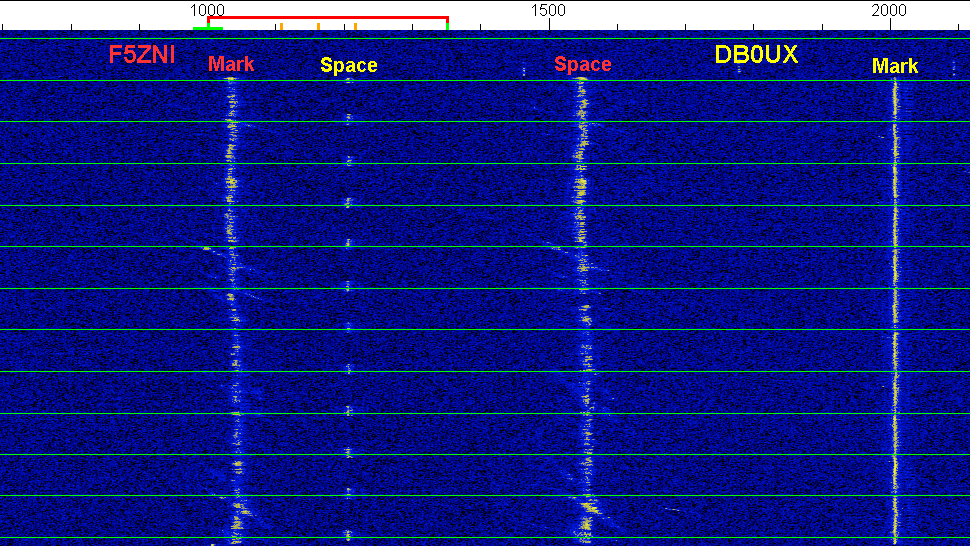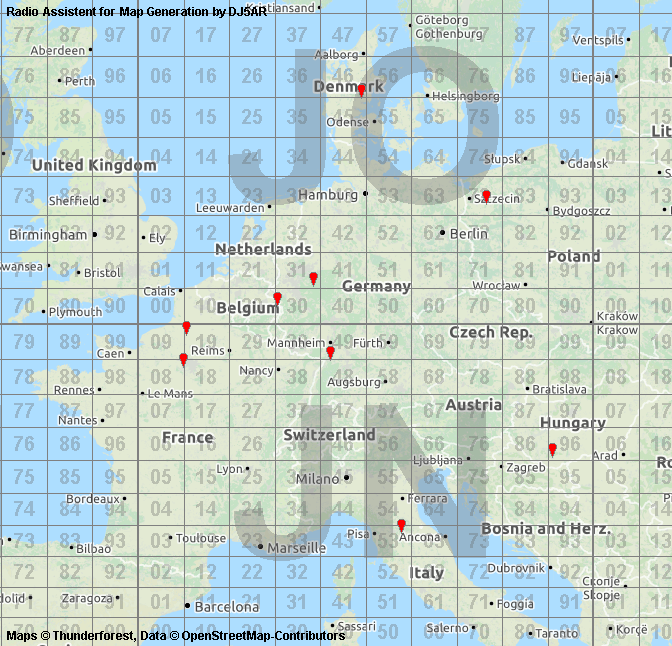June 8th, 2023
It seemed, last weeks openings, brought to us by high pressure area Wiola, had been coming to an end, but at least it was back again.

After finding a simple fault in my IC-9700 I was able to receive as usual and worked stations from Germany, the Netherlands, Denmark. I heard SM7DTT calling CQ and working some stations from UK, but he didn´t copy me. Around midnight it calmed down and PA2M on 70 cm was the last QSO.

The early morning started with Germany again and Sweden was there as well and could be worked even on 70 cm. ODX on 2 m was SM6LPF in JO78CK over 1555 km, on 70 cm SM6VTZ, JO58IJ, over 1412 km followed by SM6CEN, JO67AJ over 1409 km. But the fulminant final was brought to me by Kjeld, OZ1FF, with a QSO on 23 cm. It took a lot of patience, but at least we did it.
Thank you Kjeld!
As in the previous openings I kept an eye on 144.300 MHz, called there a couple of times in SSB, but no sign of live in analogous modes. So all QSOs were done in FT8.
NB: QSOs on 2 m in green, on 70 cm in blue and on 23 cm in red.
Addendum:
Tonight Brian, OZ7SKY, requested a FT8 sked for 70 cm in the ON4KST chat. I was pretty sure, the condx were completely gone here in the west of Ireland. But I am used to give even the crazy things a chance and as the computer is doing the job, I agreed and could decode hin at once. During the first twenty minutes we had no more, than an nice chat on KST and me telling him the level I received him. The deep QSB on his signal was between -20 and -06, when he got my report and another 15 minutes later the relief: My RRRs.

While I am writing this, my PC decodes signals of OZ2OE and OZ4VW at low levels on 70 cm. As some CQs on 2 m, after working two GMs, didn´t find any takers, I closed down the station now.
Conclusions:
Never say no to a sked request
and
NEVER BLAME A HIGH PRESSURE AREA WITH A FEMALE NAME!







 ) IN86, IN87 and IN89.
) IN86, IN87 and IN89.

















